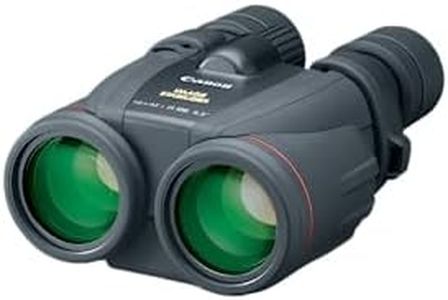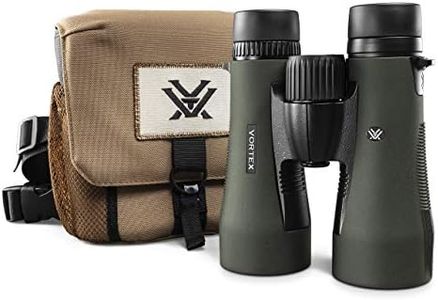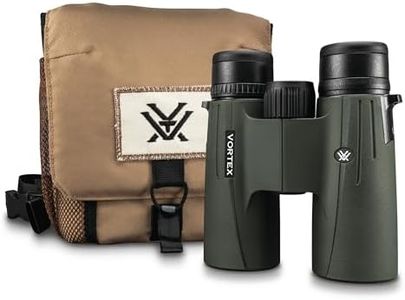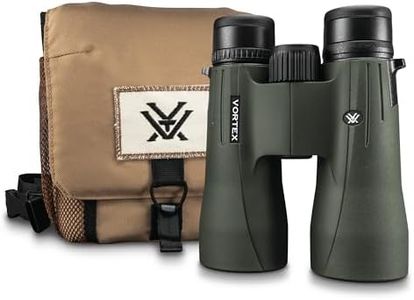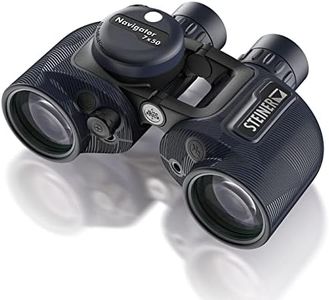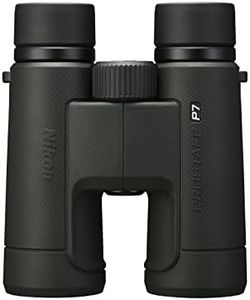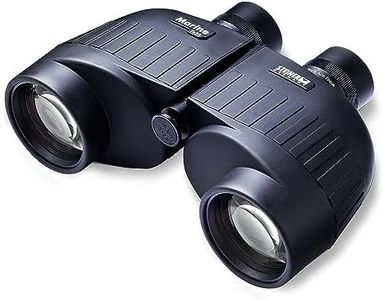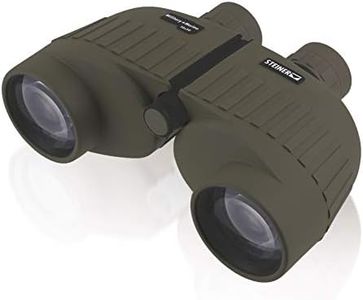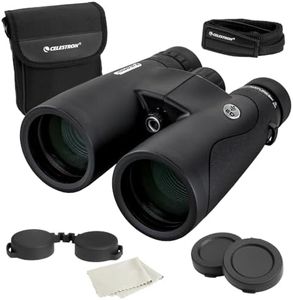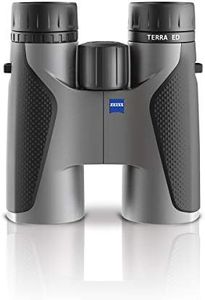We Use CookiesWe use cookies to enhance the security, performance,
functionality and for analytical and promotional activities. By continuing to browse this site you
are agreeing to our privacy policy
10 Best Waterproof Binoculars
From leading brands and best sellers available on the web.Buying Guide for the Best Waterproof Binoculars
When choosing waterproof binoculars, it's important to balance durability, optical quality, and user-friendly features. Waterproof binoculars are designed for use in wet environments, making them ideal for outdoor activities like boating, hiking, or birdwatching in unpredictable weather. Knowing what features to consider ensures you end up with binoculars that suit your needs and last a long time.Waterproof RatingThe waterproof rating tells you how well the binoculars can resist water ingress. This rating is important because it determines if your binoculars can survive heavy rain, splashes, or even submersion in water. Ratings can range from basic water resistance (resisting light rain or splashes) to fully waterproof (can be submerged for some time). If you're mostly using your binoculars in drizzle or occasional splashes, basic water resistance should suffice, but for boating, kayaking, or heavy rain, look for models labeled as fully waterproof and preferably tested for submersion (sometimes referenced as IPX ratings). Your typical environment and activities will guide how robust a rating you truly need.
Magnification and Objective Lens DiameterMagnification (the first number, like 8x or 10x) tells you how much closer you’ll see things, while objective lens diameter (the second number, like 42mm) indicates how big the front lenses are and how much light they let in. Higher magnification helps you see detail but can make the binoculars harder to hold steady and can narrow your field of view; bigger lenses gather more light but make the binoculars heavier. For activities like birdwatching or hiking, 8x42 is a common, versatile choice for a good balance between detail, brightness, and ease of use. For boating, slightly lower magnifications (like 7x) help minimize shakiness. Consider what you’ll mainly be observing and choose accordingly.
Field of ViewField of view describes how wide an area you can see through the binoculars, usually measured in feet at a certain distance (like 1000 yards). A wider field is great for tracking moving objects or scanning large areas, while a narrow field of view brings more detail but less area. If you’re using binoculars for sports, wildlife, or birding, a wider field is usually better. For stationary observation and viewing distant landmarks, a smaller field works fine. Think about what you plan to watch most often when deciding how wide a view you need.
Prism TypeBinoculars use prisms to flip images right-side up, and the two main types are roof prisms and porro prisms. Roof prisms make binoculars straight and more compact, while porro prisms produce a bulkier body but often provide better depth perception and a wider field. Roof prism designs are durable and easier to carry, ideal for frequent travel or hiking, while porro prisms are sometimes chosen for their clarity and price advantage. Your choice depends on whether you’d rather have a lighter, more portable design or prioritize certain view qualities.
FogproofingFogproofing means the internal lenses won’t get cloudy from rapid temperature changes, an important feature for waterproof binoculars that may be exposed to damp environments. Fogproof binoculars are sealed and filled with inert gas (like nitrogen or argon) to prevent internal condensation. If you’ll spend time in humid climates or want to avoid the annoyance of foggy lenses during early mornings or sudden weather changes, it's worth making sure your binoculars are fogproof as well as waterproof.
Weight and SizeWeight and size affect how comfortable binoculars are to carry and hold, especially if you’ll be hiking or traveling with them. Larger models tend to be brighter and have better optics, but they’re heavier. Compact binoculars are easier to tuck into a pocket or bag but may not perform as well in low light. Think about how long you’ll use them at a time and whether portability is a top priority—choose a size and weight that fits your style without tiring you out.
Grip and Build QualityGood waterproof binoculars usually feature a slip-resistant outer layer for secure handling in wet conditions. The build quality, often seen in materials like sturdy rubber coatings and tight sealing, impacts the binoculars’ ability to withstand drops, bumps, or rough use. If you’re often active or clumsy or expect your binoculars to be exposed to outdoor elements, look for models with robust construction and grippy surfaces.

